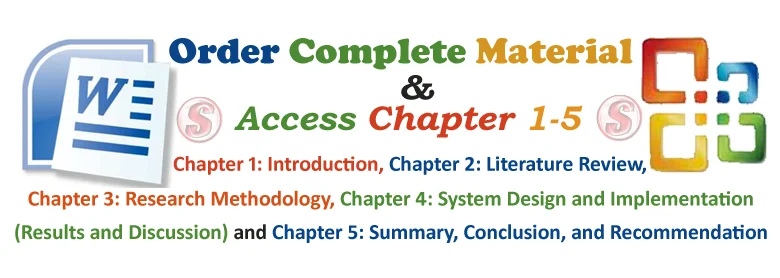1.1 Introduction
The dark side of apartheid system through the analysis of Alex La Guma’s novella: A Walk in the Night. The analysis brings out how La Guma uses his literary texts under study to reveal to his readership the lost dignity of the oppressed. This novella reveals to readers the atrocities that were perpetrated against the non- whites in South Africa. This study highlights the restrictions placed on African workers under the oppressive Apartheid system and its effects on the psyche of the non-whites in South Africa have been given credible space in the novella.
As a prelude to other parts of this study, this chapter will discuss the background upon which this study was initiated, the statement of problems that led to this study, the Aim and Objectives of the study. Others are Significance of the study, Scope of work, Limitations of the Study and Definition of technical terms.
1.2 Background of the Study
The dominant literature in Africa had been oral literature, oral literature has been existing since a long time. There was a long delay in the emergence of written literature because of the wide-spread illiteracy in Africa. The blacks have suffered injustice from the white race right from the time of slavery, this we got to know thru history. It was among this group of Africans that crossed the sea and came in closer contact with the West, this contact now brought about the first seeds of new literature like Phyllis Wheatly and George Horton, these poets were prepared to embrace the values of the whites in which they have been initiated, despite this they deplored their enslaved condition. The new world literature of the black in the eighteen and nineteen century was referred to as ‘apprentice literature’ by Jan Janheinz in a book titled A History of Neo-African Literature published in 1968. African nationalism and pan-Africanism started in the new world, between 1900 and 1945,two conferences on pan-Africanism which was held in various European capitals including New York were to play a decisive role in the growth of nationalism among African students who were studying abroad. Political independence was first proclaimed as a goal of nationalism at the sixth pan-African congress in Manchester in 1945.
Blyden was the first black man to attempt an objective appraisal of African culture, in his book titled Christianity, Islam and the Negro Race published in 1887. In this book, he traced the history of African’s contact with the outside world and produced evidence from sociology, history and literature to show that Africans had something positive to show the world, he tried to rehabilitate the living cultures of African communities and took pride in blackness, he implored his fellow Afro-Americans to do the same. He urged the black race to embrace their history and their culture and use them as the foundation for building the future. Blyden’s meetings were coloured by romantic views of his contemporary world.
Peter Abrahams in 1945 was the first non-white African novelist in his novel Sons Of The City which later appeared in the fifties, this novel began to acquire its own identity and generate the present literary explosion in the fifties. Every writer is influenced by the tradition in which he acquire his tools of writing: the language, the styles and the forms which he’s familiar with before he starts writing, this can be seen in African writings which has its own distinctive characteristics that distinguished them from other areas of the world due to the acquisition of their tool of writing[the language, the styles, the forms] from their contact with their contact with the West. Critics such as Janheinz in the book titled A History of Neo-African literature, published in 1968 defended the view that there is an essential similarity between all literatures written by people whose origin can be traced back to Africa.
At the first Congress of Negro writers which was held in Paris 1956, one of the delegates Ben Enwonwu insisted on the declaration on the need for literature to put itself at the service of nationalism:
Ben Enwonwu (1956) declared that:
The present generation of African artists therefore have
to face their political problems, and try to look at art
through politics, the kind of picture that the political
aspect of African art shows is one of strife and pity.
As African literature grew, it began to acquire different characteristics in different parts of the continent. Some part deviated from the appraisal of African, culture to face the realities of their society. South Africa deviated and started to write on their experiences and white domination, this led to ‘protest literature’ in South Africa the main emphasis is on the evils of racism, this can be seen in South Africa writers like Lewis Nkosi, Alan Patron portrays the denial of natural human relationship and the unnaturalness of the values imposed by racism, Alex La Guma in his work titled A Walk in The Night, portrays nothing but hostility between the world of the white man and the black man.
Africa literature has been divided into three broad traditions by critics. These are South African, Anglophone African and Francophone African. In South Africa the main emphasis has been on the evils of racialism, which is the main concern of this research work. The term ‘protest literature’ has often been applied to African literature in general, but the serious artists have always been concerned with more gestures of protest. In South Africa, there is an understandable preoccupation among non-white writers with the evils of repression, police brutality and arbitrary imprisonment which has led to the emergence of protest literature in South Africa.
Therefore, in Nigeria where the research was carried out, the activities that was conducted is to know the Racism and Aesthetics in Alex La Guma's A Walk in the Night and Peter Abraham's Mine Boy.
1.3 Statement of the Problems
The problem in this topic - Racism and aesthetics in Alex La Guma’s A Walk in the Night and Peter Abrahams’s Mine Boy is that Black South Africa literature is different from other black African literature; it deals with the evils of racism, which denied the people of their rights. No writer operates in a vacuum, and there is a close relationship between literature and the society, South African writers had no other issue to focus on apart from the issue of racism which was predominant in their society. The emergence of the term ‘protest literature’ came into being through the South African writers, some of which are Ezekiel Mphahlele, Peter Abrahams, and Alex La Guma. The writings of these South African writers enlightened and educated the people, and became a way of exposing the ills of racism, which turns blacks into useless and worthless beings in the society. In Alex La Guma’s A Walk in The Night, and in Peter Abrahams Mine Boy, the blacks are denied of their rights, they leave in abject poverty, due to the terrible condition, blacks become useless to themselves and to the society at large, they can do anything to get money so as to survive.
1.4 Aim and Objectives Study
The aim of the study is to assess the Racism and Aesthetics in Alex La Guma's A Walk in the Night and Peter Abraham's Mine Boy. In achieving this aim, the following specific objectives were laid out as follows:
- To examine the Racism and Aesthetics in Alex La Guma's A Walk in the Night and Peter Abraham's Mine Boy
- To explore racism as a thematic preoccupation in Peter Abrahams Mine Boy and Alex La Guma’s A Walk In The Night.
- To address the issue of racism and find possible solutions to racism, by using the novels used in this work to counter the negative attitude of the whites and exonerate the blacks that have been downgraded by the evils of racism.
1.5 Justification of Study
Protest literature is a dominant literature in black South Africa, and this is due to the fact that the blacks in South Africa are been deprived of their rights and they suffer oppression and brutalization from the whites. New world literature of the eighteen and nineteen century by the African slaves that came in contact with the West was concerned mainly with the appraisal of African culture, and values, but as time went on, each writer began to write on a major preoccupation of his society, since literature and society are interwoven, and no writer operates in vacuum, so South Africa writers had to face the situation of racism facing their society so as to attend to the people’s urgent need, this led to the emergence of writers such as Ezekiel Mphahlele, Lewis Nkosi, Alex La Guma, Peter Abrahams, these writers treated the issue of racism with passion and with the focus to terminate racism. This work shows the main reason for the emergence of protest literature in South Africa.
1.6 Methodology
The two novels used in this research work have characters who are youths. In Alex La Guma’s A Walk in the Night, the characters are made up of youths, the youths are the main people affected negatively by the ills of racism, their early life is wasted because they are deprived of their rights. The same thing applies also in Peter Abraham’s Mine Boy, the characters are made up of characters who are between the ages of twenty-five to thirty five (25 – 35) which falls under the youth of the society.
In ‘A Walk in the Night’, uncle Doughty is the only old man in the novel and in Mine Boy, Ma Plank is also an old woman, this shows us that the youths are the main victims of racism, the youths are young and agile, they are ready to work in the society, but racism makes them useless because they are deprived of working in places they want, they are employed as labourers working in the sun for just a little pay and are ejected finally to become liabilities, inorder to survive, they engage in illegal acts, so far they get money for survival.
1.7 Scope of the Study
The study focuses mainly with racism and aesthetics, how Peter Abrahams and Alex La Guma have portrayed racism, the tools they used to show in their novels the extent to which the blacks were oppressed in their own country by whites. Furthermore, the research work showed the relationship between the aesthetics used in the novels and how it portrays racism.
This study will be of immense benefit to other researchers who intend to know more on this study and can also be used by non-researchers to build more on their research work. This study contributes to knowledge and could serve as a guide for other study.
1.8 Limitations of the Study
During the course of this study, many things militated against its completion, some of which are:
- Time Constraint: The time frame given to accomplish this project was very short due to school academic calendar and it was carried out under pressure which made the researcher not to implement some necessary features.
- Research material: availability of research material is a major setback to the scope of the study.
- Frequent power failure: This made the researcher append more money on fuel to ensure sustainable power.
- Financial Constraint: Insufficient fund tends to impede the efficiency of the researcher in sourcing for the relevant materials, literature or information and in the process of data collection (internet).




